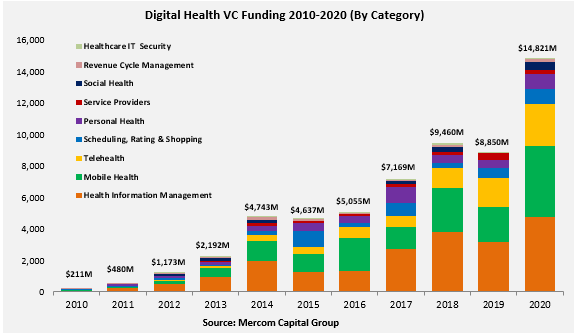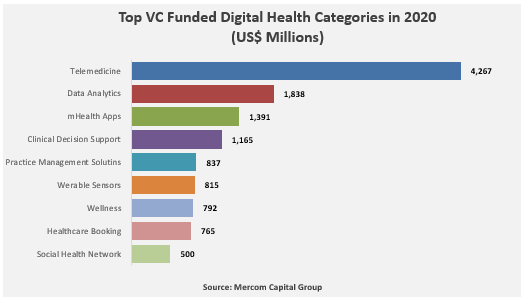
 The end of last week marked an Apocalypse Light in telehealth, but it was coming in this Editor’s opinion. And Pepper the Robot has nothing to do with it, other than representing telehealth’s state, and perhaps this Editor’s.
The end of last week marked an Apocalypse Light in telehealth, but it was coming in this Editor’s opinion. And Pepper the Robot has nothing to do with it, other than representing telehealth’s state, and perhaps this Editor’s.
Two events–the forced exit of 15-year CEO Jason Gorevic from Teladoc and both Teladoc’s and Amwell’s continued market weakness and long roads to breakeven, if ever–have caused many in the field to think hard about our direction and where telehealth is going.
Both Teladoc and Amwell are the pioneers in provider-to-patient telehealth, going back over 20 years. While Amwell is no longer the #2 to Teladoc’s #1, both were in the forefront of how remote consults have transformed healthcare. The ability to remotely diagnose and provide care at distance is now a ‘given’ that has shifted the baseline for providers, patients, and payers. Nearly every entrant has or has acquired a remote in-person or app feature, whether care management, diagnostics, health education, or telemental health.
Because Teladoc’s struggles are writ large in the industry, we might benefit from a closer look at What Happened–and what in this Editor’s opinion might happen next.
What Happened?
The pandemic. Yes, it provided a major boost to any telehealth provider’s business whether corporate or provider-based. It mainstreamed telehealth. Smaller players like MDLive and Included Health snatched market share. But it also introduced ‘silly money’ that led companies to think that all they had to do was hold out the buckets, fill them with cash, and buy business. By late 2020, practices had reopened–and telehealth usage nosedived quickly, stabilizing to around 5% of medical claims, over 60% of which is mental health according to the FAIR Health end of 2023 telehealth tracker.
The integration of telehealth into multiple platforms is now commonplace. This Editor observed in her work with her then-employer in early 2020 that the population health platform they had introduced already had integrated HIPAA-compliant telehealth platforms as a module–all that was needed to get the practices up and running on it–and coding correctly. Health systems now integrate telehealth into their patient portals. EHRs even for the small practice market now have integrated telehealth. As mentioned, specialized telehealth such as telemental health took off during the pandemic and, after a cleanout period, have largely stayed with us. Asynchronous telehealth has also become acceptable to consumers. (Interestingly, the leading asynchronous diagnoses are for hypertension and respiratory diseases that benefit companies like Amazon Clinic and triage-type systems.)
People use it when needed, but the enterprise payment model is subscriber-based. Teladoc has long claimed its subscriber base is 90 million people–but user data from HHS (ASPE 3/2023) indicates that only one of four use it. For an enterprise, paying for subscribers, this is a big fat line item ready to cut. Payers have also integrated telehealth into their coverage. Teladoc has, to its credit, created payer partnerships such as with Aetna, but so have others.
Bottom line: there’s no more ‘blue water’ market left for a big player like Teladoc with a model dependent on growth and on enterprise sales that are inherently price-driven. It’s a hard and painful change to realize that your technology is no longer the future, and that you have to slug it out in the mud with everyone else.
A closer look at Teladoc.
After 20 years, why wasn’t it profitable? A look back on our Teladoc coverage prior to the pandemic indicated growth was created by buying up smaller competitors, domestic and international, at premium prices. InTouch Health was a notable one, acquired January 2020 for $600 million. But Teladoc was way overdue on turning a profit before 2020, at which point it should have firmly moved into the black. And then reality hit by early 2022.
Where was the board in all this? This Editor does not pretend to know the minds of those far more experienced in the financial aspect of business than she. But after 15 years of CEO Jason Gorevic and the 2022 $6.6 billion write-down of Livongo which precipitated the long 90%+ loss in market value slide, why was he given walking papers only last Friday? Boards are supposed to be wise heads, looking out for the business and the shareholders. Did they get caught in the hype or hope that BetterHelp would save the company? Did something else happen? (Fun fact: Mr. Gorevic remains on the board.)
A track record of flawed judgment and recovery. In December 2018, their COO/CFO was dismissed after charges of insider trading and sexual misconduct. There have been two COOs since then, the first, David Sides, moving to CEO of NextGen Healthcare in 2021. In May 2019, Teladoc’s NCQA accreditation, first won in 2013, was placed under an unusual “corrective action” by NCQA which was termed by the CEO ‘much ado about nothing’. Au contraire, it was a black eye at the time and the industry never quite knew what happened. And then there was Livongo….
The Livongo deal killed Teladoc; saying the quiet part out loud. As this Editor stated at the time, the $18.5 billion purchase price of Livongo was dangerous for Teladoc (see ‘Gimlet Eyes’ from August 2020 here and here). It was a too-fast too-much too-soon deal that closed in three months at the summer peak of the pandemic and lockdowns looking like forever. The very notion that Livongo would open doors in hospitals and cross-selling to enterprises was suspect even at the time. The deal that Gorevic and 7WireVentures’ Glen Tullman and Livongo CEO Zane Burke concocted was ‘Grand Theft Auto’–for Livongo and their leadership, especially if they sold their Teladoc shares. It was never a merger of equals nor was it additive in value. Teladoc then made multiple, continuing transitioning and management errors, including not retaining Livongo executives, which have been well documented. And again–where was the board on this?
Where are the analysts? They seem to accept a storyline that ‘all is OK’ for 2024 now that Gorevic is gone. But standing pat on the Q1 and 2024 guidance as nearly all have done is suspect. Unlike Amwell, Teladoc has not forecast when it will achieve breakeven, much less profitability.
What’s Next? Given all the above, when will the aftershocks hit? Sooner or later?
If one looks to Walgreens as an example, where disaster hit quickly and hard last summer, a board member, Ginger Graham, took the acting CEO position. She took front and center on investor calls and executing reorganizations, which for an interim is unusual. Almost immediately, the cleanout began at the CIO and CFO levels and moved downward. Tim Wentworth joined as CEO in mid-October 2023 seven weeks after Roz Brewer was separated. VillageMD was identified quickly as a large part of the problem. He took the writedown even before locations were fully closed and made multiple moves to cut costs starting at the corporate level before moving into the field. This is not to make light of the human damage and the jury remains out on the wisdom of some of the moves. But Wentworth has moved quickly, decisively, and positioned it realistically in saying ‘this is not a 12-month turnaround’ and wisely caveating that board alignment around the strategic review was essential. Timid he is not.
Teladoc needs to move quickly, and intelligently–now, not later. While acting CEO Mala Murthy, backed by the board, makes decisive moves, Teladoc must find and appoint a Tim Wentworth-type at the helm for the turnaround. Quickly. It’s important not only for Teladoc but also for the telehealth industry. But neither Mr. Market, judging on share price, nor this Editor, based on their track record, are hopeful.
 Teladoc lets loose with the cash, snaps up Catapult Health to get into preventative health services. Teladoc’s agreement with Catapult to acquire them for $65 million is their first significant purchase move by Teladoc since the $18.5 billion Livongo buy in 2020 and the first for new CEO Chuck Divita, who joined Teladoc last year. The strategy, as alluded to at the JP Morgan conference, is to widen the product breadth to deepen impact on healthcare outcomes.
Teladoc lets loose with the cash, snaps up Catapult Health to get into preventative health services. Teladoc’s agreement with Catapult to acquire them for $65 million is their first significant purchase move by Teladoc since the $18.5 billion Livongo buy in 2020 and the first for new CEO Chuck Divita, who joined Teladoc last year. The strategy, as alluded to at the JP Morgan conference, is to widen the product breadth to deepen impact on healthcare outcomes.



















Most Recent Comments